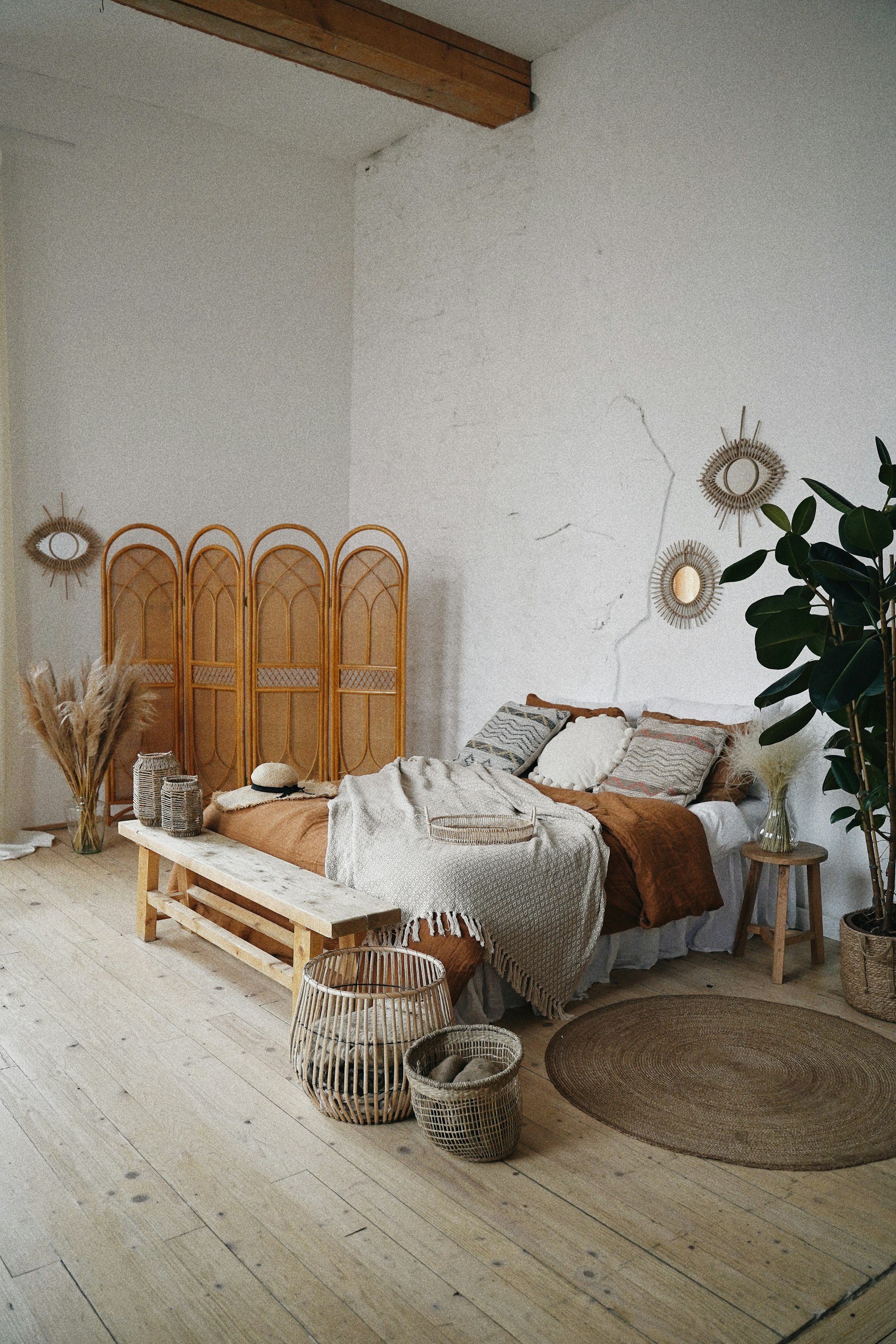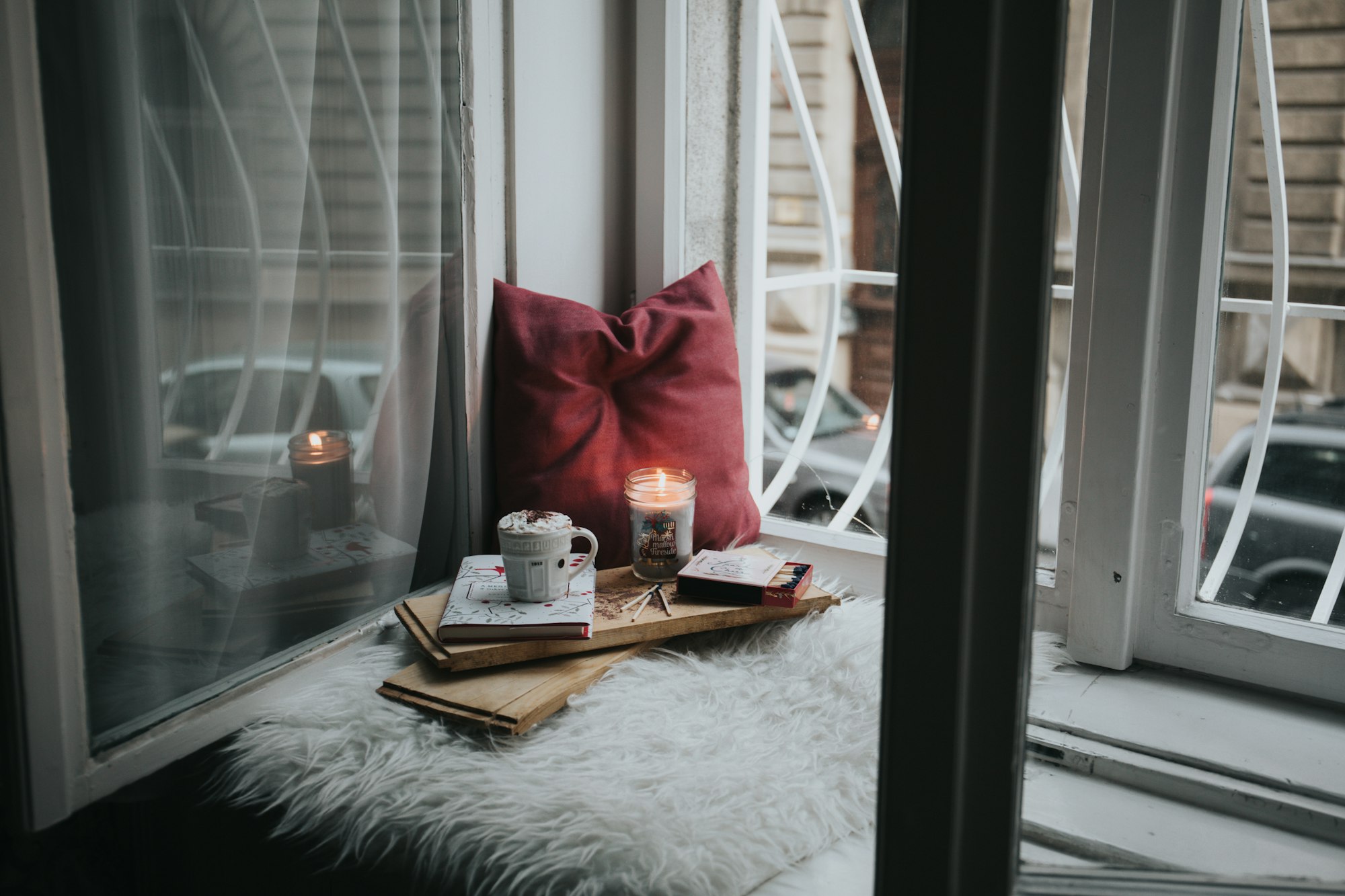60 Top Interior Design Terms You Need to Know
Learn the interior design terms so you know the lingo whether you want to become an interior designer or want to hire one.

When it comes to home design and decorating, there are many terms that can seem foreign to someone now familiar with the industry. Whether you’re considering hiring an online interior designer or becoming one, here are the essential interior design terms you should know to make you look like a pro.
If you watch any home improvement shows or follow any interior designers on YouTube, you might already be familiar with some, while others might be new to you. We’ve compiled a handy list of terms to help you navigate the lingo so you know the difference between a chaise and a sette.
Top interior design terms
Alcove - A small recessed area within a room, often used for seating, storage, or display.
Art Deco - A design style that emerged in the 1920s and 1930s. It is characterized by geometric shapes, metallic finishes and bold colors.

Balance - The distribution of visual weight in a space to create a sense of stability and harmony.
Balustrade - A series of small posts or pillars supported by a rail, used as a safety barrier on staircases, balconies, or terraces.
Banquette - A built-in bench or seating area, often used in dining rooms or kitchen nooks.
Bauhaus - A design movement that emerged in Germany in the early 20th century. It’s characterized by colorful textiles, natural materials and vintage or handmade objects.

Bohemian - A design style that embraces a relaxed and eclectic aesthetic. It incorporates colorful textiles, natural materials and vintage or handmade decor objects.
Bouclé - A type of fabric characterized by a looped or curled surface, often used for upholstery or pillows.
Brocade - A type of heavy, ornate fabric woven with raised patterns, often used for upholstery or drapery.
Chair rail - A decorative molding installed on walls at chair height, used to protect walls from chair backs and to add visual interest.

Chaise - A long, upholstered seat with a backrest designed for reclining or lounging.
Clerestory - A high, narrow section of the wall that contains a window above eye level. It can be used to provide natural light and ventilation.
Color scheme - A set of colors that are used together to create a harmonious and visually pleasing interior design.
Console table - A narrow table designed to be placed against a wall, often used for display or storage.
Contrast - The use of opposing elements, such as light and dark colors, smooth and rough textures, to create visual interest and depth.

Eclectic - A design style that combines elements from various sources or styles, creating a unique and personalized look.
Elevation - A drawing that shows a vertical view of a room or building, typically used to show the placement of furniture and other elements.
Enfilade - A series of rooms aligned in a straight line, typically with doors or openings between them.
Etagere - A decorative and functional piece of furniture with open shelves, often used for displaying books or decorative objects.

Faux - A finishing technique that mimics the look of a different material, such as wood, stone, or marble, through painting or other methods.
Feng shui - A practice of arranging furniture and other elements in a space to promote balance and harmony, based on ancient Chinese principles.
Focal point - The element in a space that draws the eye and creates a sense of visual hierarchy.
Form - The shape and structure of objects in a space, such as furniture and architectural features, that contribute to the overall design aesthetic.
Harmony - The overall sense of cohesion and unity in a space, achieved through the use of complementary colors, textures and materials.

High-gloss - A finishing technique that creates a shiny and reflective surface on furniture, flooring, or wall finishes.
Hue - A color or shade of a color, such as blue, green or red.
Hygge - Danish concept of creating a cozy and comfortable atmosphere in a space, often achieved through warm lighting, soft textures and natural materials.
Industrial - A design style characterized by exposed brick, concrete and metal surfaces, as well as utilitarian objects and fixtures.
Interior wall - A wall located inside a building, used to separate rooms or provide structural support.

Laminate - A synthetic material used for flooring, countertops and other surfaces, typically made of layers bonded with resin.
Lighting - The use of artificial or natural light sources to enhance the mood and functionality of a space.
Line - The use of vertical, horizontal, or diagonal lines to create visual interest and direct the eye in space.
Matte - A finishing technique that creates a flat, non-reflective surface on furniture, flooring, or wall finishes.

Mid-century modern - A design style popularized in the mid-20th century that emphasizes clean lines, organic shapes and new materials.
Minimalism - A design style that emphasizes simplicity and minimal use of decoration and color.
Monochromatic - A design scheme that uses different shades and tones of a single color to create a cohesive and harmonious look.
Mood - The emotional tone or atmosphere created by the overall design of a space.
Natural finishes - A finishing technique that preserves the natural color and texture of wood or other materials without adding color or shine.
Niche - A recessed area in a wall, often used for display or storage.

Patina - A thin layer on a surface of metal materials created by aging or wear. It creates a unique and desirable texture and color.
Proportion - The relationship between the size of different elements in a space, such as furniture and architectural features.
Proximity - The relationship between elements in a space, such as a furniture placement and the distance between objects.
Rhythm - The repetition of similar elements or patterns to create a sense of movement and visual interest in a space.

Rustic - A design style that incorporates natural materials, such as wood and stone, and emphasizes a cozy and warm atmosphere.
Scale - The size and proportion of objects and elements in relation to each other and the overall room.
Scandinavian - A design style that emphasizes simplicity, functionality and natural materials, such as wood and wool.
Sconces - Decorative light fixtures mounted on walls, often used to provide ambient or accent lighting.
Settee - A small upholstered sofa or loveseat, typically with a backrest and arms.

Shabby Chic - A design style that incorporates vintage and distressed furnishings, pastel colors, and floral or feminine accents.
Shiplap - A type of wooden board with a rabbet (groove) along the top and bottom edges, allowing them to fit together tightly, often used for decorative wall paneling or siding.
Space planning - The process of arranging furniture and other elements in a space to create optimal flow and functionality.
Symmetry - The use of identical or similar elements on either side of a central axis to create balance and order in a space.
Textured - The visual and tactile quality of surfaces in a space, such as fabrics, flooring, and wall finishes. The use of multiple textures in a space adds depth and visual interest.

Tile - A durable and decorative material used for flooring, walls and backsplashes, available in a variety of shapes, sizes and colors.
Transitional - A design style that combines traditional and contemporary elements to create a timeless and balanced aesthetic.
Upholstery - The fabric or material used to cover furniture, such as chairs, sofas and cushions.
Victorian - A design style popular in the late 19th century, characterized by ornate and elaborate furnishings and decorative elements.

Wainscoting - A type of decorative paneling installed on walls, typically consisting of a lower section made of wood or other material and an upper section left plain.
Wallpaper - A decorative material that is applied to walls to add pattern, texture and color to a space.
Window treatments - Decorative and functional coverings for windows, such as curtains, blinds, or shades.
Now that you have all the interior design terms, you can practice your interior design skills with Planner 5D. Are you looking to start a career in inerior design? Become a Planner 5D Pro today. Happy decorating!
